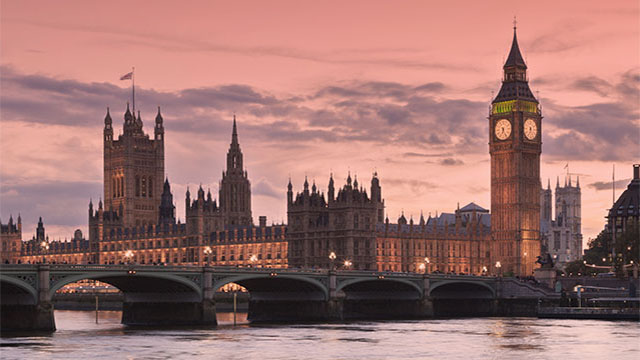Traditionally, Birmingham has not been renowned for its retail, but it can now be proud after research found it to be the UK’s second-largest retail centre by shopping spend.
Britain’s self-proclaimed second city, which for many years punched well below its weight in the retail ratings, has jumped ahead of Glasgow and is now behind only London’s West End, according to Lambert Smith Hampton’s Retail cities report.
The development of the Bullring and the Bullring Link, together with other retail schemes such as the Mailbox, has reshaped the city’s retail offering in recent years.
Birmingham back on the map
“The Bullring has been an unqualified success,” says Nick Round, director of retail agency at Lambert Smith Hampton’s Birmingham office. “The Bullring and its recent extension, the Bullring Link, have been a massive boon for Birmingham.”
He continues: “It now attracts a total retail expenditure of £2.2bn pa. This puts it just £8m ahead of Glasgow, but it is just less than half the amount spent in London’s West End. However, shoppers spent nearly 50% more in Birmingham than they did in Manchester, Nottingham or Leeds.”
Adam Lazenbury, associate director at DTZ, agrees. “The Bullring has put Birmingham back on the map,” he says. “It’s brought the city to where it should be.”
Some 35m people walked through the doors of the Bullring in its first year, says Parmjit Singh, real estate partner at Eversheds, which is client partner for the Birmingham Alliance, the team behind the Bullring and its leading rival the Mailbox. “A number of those people would not have come to Birmingham if it had not had the Bullring,” he adds.
Such a significant development was always going to have a major impact.
Wright Silverwood director Andrew Benson says: “The Bullring has added massively to the retail provision in the city centre, but it has meant that some other areas did suffer a bit of a blip. However, I believe they are coming back.”
Singh does not believe the vacancy rate has been as much of a problem as some people feared. “People were very concerned about it in the run-up to the Bullring’s opening, but it’s not been a problem,” he says. “If you walk down New Street and Corporation Street, the vast majority of the units are occupied. Even if the Bullring was not there, I think you would still end up with the odd unit that’s vacant.”
Pre-Bullring, zone A rents of up to £330 per sq ft were being achieved. This dropped when supply increased, but Richard Bidwell, director of retail at Colliers CRE, believes rents for prime sites have since risen to similar levels.
“Prime Birmingham retail is now at the £325 per sq ft mark,” he says. “The prime in Corporation Street was probably around £280-£285 per sq ft historically, and this would drop down to around £225-£250 per sq ft as you moved closer to the junction with Union Street. I don’t think you would achieve these levels on a new letting. There are considerable incentives available on the units being marketed there.”
The effects of the Bullring and the extra visitors have been felt in the £150m, city-centre Mailbox, which was completed in 2000 and features 140,000 sq ft of shops alongside bars, restaurants, hotels, flats, offices and parking.
This scheme helped to extend the retail heartland, attracting retailers such as Harvey Nichols, Emporio Armani and Bang & Olufsen. With leisure, health and beauty and other specialist outlets, it prides itself on being more than “just a retail” destination.
Alan Chatham, co-founder of Birmingham Mailbox, says: “I don’t think we could have achieved our success without the Bullring. I suspect a significant number of people coming here to try us are coming to Birmingham as a result of the Bullring.”
After the Bullring opened, sales fell at the Mailbox, but it posted a 3% rise in sales last year compared with 2003, adds Chatham.
Deals on the three vacant units in the Mailbox are now being tied up and plans are about to be unveiled for a further 60,000-70,000 sq ft of retail space, which will come onto the market in spring/summer 2007 as part of phase 2 of the development.
One sector that many people feel is still lacking is that of niche retailers. The Mailbox has helped to address this, but experts believe there are opportunities for small independent retailers to set up in the city.
LSH’s Round says: “Pre-Bullring, these retailers were simply unable to compete with mainstream retailers for space. Now we could see many more specialists following fashion retailers Louis Vuitton and Hollywood Hustler and confectioner Chouchoute, which have already moved into the city.”
Wright Silverwood’s Benson hopes that the future may bring more variety. “A lot of space has been freed up outside the Bullring,” he says. “I would hope to see people from within and outside the region open more specialist shops. They were priced out before.”
|
|
|
Demand is still high for out-of-town retail centre destinations, according to Nicholas Pitt, centre manager at Fort Shopping Park. The development of the Bullring has led to a slight drop in weekend customer footfall at the retail park, but business during the week has been unaffected. Retailer demand for units has stayed strong, he says. Marks & Spencer has become the latest retailer to join Fort Shopping Park. It is due to open a 35,000 sq ft unit for food and general merchandise in September. “Demand for units is still high,” adds Pitt. “It’s a case of choosing the right tenant to give a good retail mix.” Rents have gradually risen to an average of £60 per sq ft at the park. |










